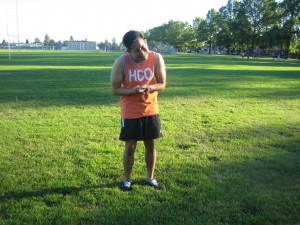Joints are parts of the body where two bones connect together. Arthritis causes damage to the normal joint surfaces which provides smooth motion. This smooth surface is cartilage and when it is damaged, it will result to arthritis. Osteoarthritis and rheumatoid arthritis are the two types of arthritis that affects the fingers. Osteoarthritis is also called the wear-and-tear arthritis.
Among those who have osteoarthritis, the cartilage is worn away and exposes the bone of the joints, usually affecting the knuckles of the middle finger and fingertip as well as also the joint found at the base of the thumb.
Rheumatoid arthritis causes destruction of the joint. It is a systemic disease that causes inflammation of the soft tissue that surrounds the joints. The fingers that are usually affected include the knuckles and the base of the fingers.
Symptoms
- Swelling and joint pain
- Stiffness
- Loss of motion
- Lumps or nodules develop around the knuckles of the finger which are called Heberden’s node. If the node is found around the closer knuckle, it is called Bouchard’s node. The joints will develop bone spurs after some time.
- The knuckles become enlarged, stiff and swollen.
Take the prescribed anti-inflammatory medications to help lessen the inflammation and swelling on the joints. - Deformities of the hand
- Sometimes, the fingers slip out of the normal position and drift away from the thumb.
Causes
The damage caused on the joints occurs in three parts – cartilage, capsule and synovium. The cartilage is a hard polished coating on the ends of the joint and helps the bones in gliding smoothly on each other. The capsule is a membrane that encloses the joints and the synovium is a thin membrane that lines the capsule and deposits synovial fluid that lubricates the joints and the cartilages. Joint inflammation can be caused by wear and tear of the joints, bacterial or viral infection, autoimmune diseases, broken bone and metabolic abnormalities.
Treatment
- Perform exercises regularly in order to help improve the flexibility of the joints such as swimming and water aerobics can help with the condition.
- Take the prescribed anti-inflammatory medications to help lessen the inflammation and swelling on the joints.
- Seek the help of a physical therapist to help maintain motion and minimize stiffness of the joints.
- Apply an ice pack and heating pad to help improve range of motion and stiffness of the joint. Apply alternate hot and cold compress on the hand to help minimize joint pain on the fingers. Apply cold compress on the hand at least 10-20 minutes and then swap it with a warm compress with the same time of 10-20 minutes. Repeat this procedure 3 times every day for best results.
- Wear splints to relax and rest the affected joints.
- Use cinnamon and honey for treating arthritis in the fingers. Honey has antiseptic properties that help lessen joint pain while cinnamon has antioxidants to relieve the joint pain. Mix ½ teaspoon of cinnamon to tablespoon of honey, mix them well and drink this solution before breakfast every morning.
- In a bowl filled with warm water, mix it with some Epsom salts. Soak the affected fingers at least 30 minutes every day. Epsom salts helps lessen inflammation and pain because Epsom salt is rich in magnesium content. Another way is mixing Epsom salt with warm oil, massage the fingers between soaks.

